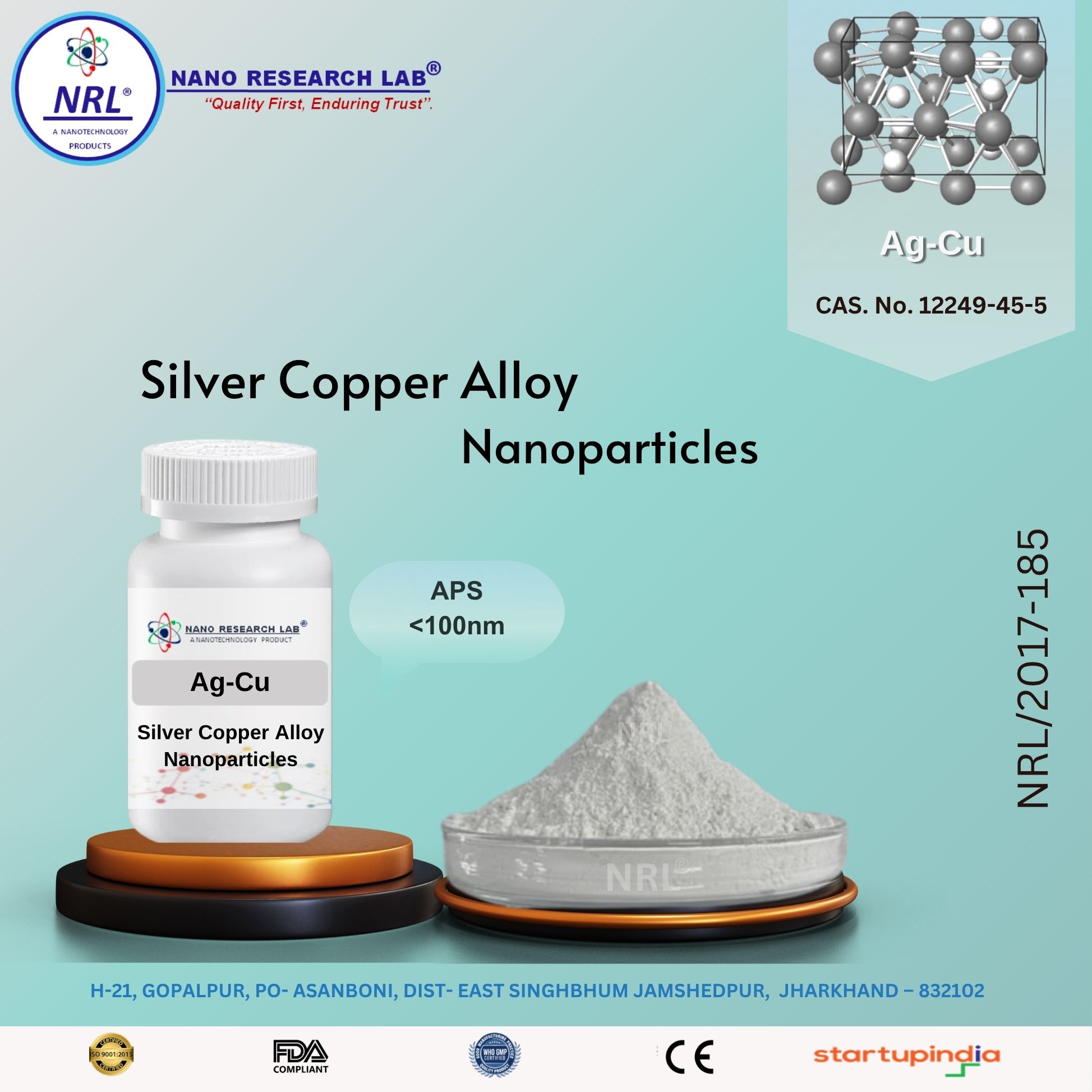
Ag-Cu Alloy Nanoparticles/Nanopowder (99.5% <100nm)
₹1475.00
🧪 Ag-Cu Alloy Nanoparticles / Nanopowder (Purity 99.5%, Particle Size <100 nm)
⚙️ Technical Specifications
Property | Specification |
|---|---|
Material Name | Silver-Copper (Ag-Cu) Alloy Nanoparticles |
Composition | Ag-Cu (various ratios, commonly 70:30, 50:50, customizable) |
Purity | 99.5% |
Average Particle Size | <100 nm |
Appearance / Color | Grayish metallic fine powder |
Crystal Structure | Face-Centered Cubic (FCC) alloy structure |
Density | ~9.0 g/cm³ (depending on Ag:Cu ratio) |
Melting Point | 800–950 °C (alloy-dependent) |
Electrical Conductivity | High; excellent metallic conductivity |
Thermal Conductivity | Excellent; superior to pure Cu in some compositions |
Solubility | Insoluble in water; stable under ambient conditions |
CAS Number | 7440-22-4 (Ag), 7440-50-8 (Cu) |
Storage Conditions | Store in airtight container under inert atmosphere; protect from moisture, strong acids, and oxidizers |
🌟 Key Features
High-purity Ag-Cu alloy nanoparticles (<100 nm)
Excellent electrical and thermal conductivity
Good chemical stability and oxidation resistance
Uniform particle size and high surface area
Enhanced antibacterial properties due to Ag component
Ideal for conductive inks, coatings, and electronic applications
Metallic alloy structure provides superior mechanical and thermal properties compared to pure metals
🔬 Applications
1. Electronics & Conductive Materials
Used in conductive inks, pastes, and adhesives
Suitable for flexible electronics, printed circuits, and sensors
2. Catalysis
Acts as a catalyst or catalyst support in chemical reactions
Effective in reduction, oxidation, and electrochemical reactions
3. Antimicrobial Applications
Silver content provides broad-spectrum antibacterial and antifungal properties
Used in medical devices, coatings, and textiles
4. Nanocomposites & Coatings
Reinforces polymers and ceramics for enhanced mechanical, thermal, and conductive properties
Applied in anti-corrosion and functional coatings
5. Energy & Sensors
Used in batteries, supercapacitors, and gas sensors for improved performance
6. Research & Material Science
Ideal for nanomaterial synthesis, alloy studies, and advanced material research
⚠️ Handling & Storage
Store in a dry, airtight container under argon or nitrogen atmosphere
Avoid contact with strong acids, bases, and oxidizing agents
Handle with gloves, mask, and protective eyewear
Use in a well-ventilated area to minimize nanoparticle inhalation
Keep away from heat, sparks, and direct sunlight
